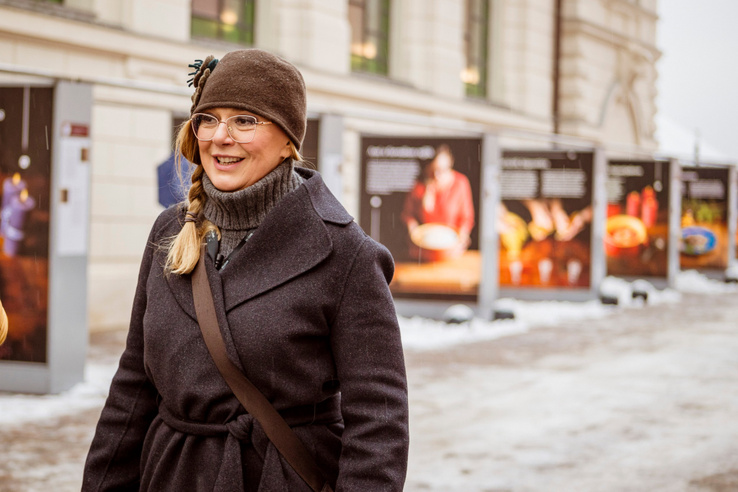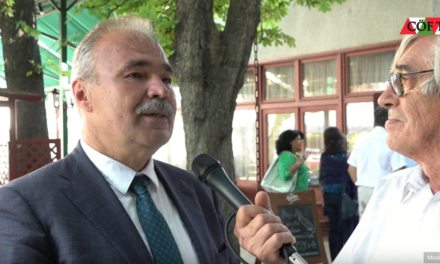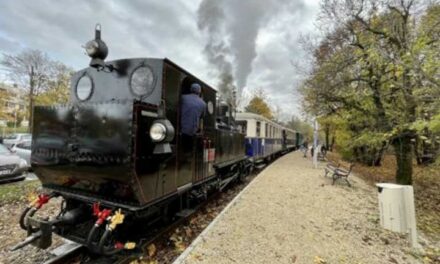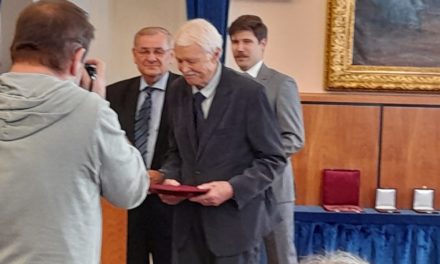A wonderful open-air photo exhibition called The Table Tells – Festive Meals with Marc Borbás has opened in the Budavári Palace District.
It is never easy to slow down and tune in to the holidays at the end of the year, it was like this last year and it will be like this next year as well. We have definitely left the rhythm of life of the old people behind us, but if we walk up to the Buda Castle District and look at the open-air photo exhibition Mesél az astal – Festivities with Marcs Borbás with mulled wine in Csikós Udvar, there is a good chance that we will understand something about life and get the urge to to look at the upcoming holiday season a little differently this year.
Marcsi Borbás doesn't know what delicacies were collected in the pantry weeks before Christmas, or even weeks before Advent, because he searched for the origin of these customs. More specifically, he doesn't know just because of this, as he has a huge amount of knowledge and collection work behind him, which he has done all over the Carpathian basin - however, what is most enviable about this knowledge and his attitude to food is that he has seen these customs before.
This is how his grandparents prepared for the holiday, and he memorized these traditions, preserved them, and now presents them to us through 36 large tableaus.
In the snowy rain at the end of November, when you were soaked to the skin and your boots were full of water, no one would have liked to hang around in the slush for long minutes. The fact that dozens of interested people did this at the opening of the open-air photo exhibition Mesél az astal – Celebratory meals with Marcs Borbás is only thanks to Marcsi Borbás, who talks so enthusiastically, with such devotion and love about the food shown in the pictures and about the most important questions of life through food, that everyone listened with open mouths.
They were proud of their fatness
The photos show not only the traditional Christmas dishes, such as jelly, stuffed cabbage, fish soup, honey pudding, fried carp, rétes, gerbó or bagels, but also the people behind them and a whole cultural history. Why were those stuffed cabbage "batyuk" - sometimes the size of a palm - so transparent that sometimes a grain of rice or a piece of meat pierced their side?
Well, because at that time, cabbage with thin leaves was still grown, which is not grown today, because it is not worth it.
For puff pastry, the puff pastry had to be removed in good time, and since baking puff pastry is a difficult task, if someone did well with these cakes, he could be proud, because it showed his skills as a housewife - Marcsi is also proud of her puff pastry shown in the picture. And in the same way, eggs, nuts, and poppies had to be collected throughout the year, but a few bunches of grapes and a few melons were also preserved for Christmas: preservation was a separate science, and at the same time, you had to foresee the whole process of when the time would come.
Small mistake in the picture
Advent fasting foods are a separate category: a simple bean soup with milk, in addition to being very delicious, tells the story of how, even on meat-free days, they had to take in as much protein as they could with their work. Marcsi can talk with an amazing amount of knowledge about the physiological effects of traditional foods, what essential acids and essential oils e.g. the poppy contains: our ancestors knew the beneficial effect from experience.
Everything had a specific order, and this order was not experienced as constraint, but as a sustaining force.
The women knew when they had to gather to serve the pastry, for which they had the special tablecloth that was used only for this purpose. This tablecloth became greasy, but it could only be cooked in hot water, no detergent could touch it, because then its smell would also have passed into the pastry dough. The women's hands could not stop while rolling out the dough, because then the dough immediately starts to get holes: this is well illustrated by the exhibited tableau, because it shows that since Marcsi's hand stopped for the photo, the dough also got holes. If you look carefully, you can find this small error.

The table tells the story of the open-air photo exhibition Festive food with Marcs Borbás / Photo: Várkapitányság
In the title Mesél az astal... it is also included what these tablecloths could tell a story about, but at Christmas the beautifully crocheted, embroidered, ornate festive tablecloths also gained meaning, and the grandmother, who knitted and sewed them, knew exactly that at Christmas everything falls into place.
Housewives' thoughts
József Vinkó, editor-in-chief of the gastro-cultural magazine Magyar Konyha, highlighted this order of life in his opening speech, according to
Marcsi Borbás has practically been searching for the lost harmony for years and bringing it back to our lives if we let him.
When we still knew what customs were associated with which day in the Christmas circle, why Luca's chair was made, what could be connected to the feast of Saint Andrew or Epiphany. Marcsi tells all this professionally and authentically.
The sight of beautifully prepared food brings out the habits of one's own home in everyone, Krisztina Sikota, deputy general manager of tourism, culture and communication of Várkapitányság Nonprofit Zrt., told about her experiences as a practicing housewife who loves to cook, for example, at the exhibition opening. According to them, although the carefully laid table and the cooking of the festive meals require a lot of time, we are sending a message to those gathered around the table that they are important to us, since we prepared everything that was put on the table with love, taking our time.
The special feature of the exhibition is that we can not only get to know the festive dishes of the Hungarians of the Carpathian Basin, but also get an insight into the traditions, beliefs and ritual customs associated with each dish, and into the interesting stories that each set table tells us all about.
- stressed the deputy general manager, who says that the moments spent at the table also give us time and the opportunity to tell our children the family recipes and their stories.
"Marcsi's exhibition shows that Hungarian cuisine certainly abounds in the Advent and Christmas seasons with recipes and customs that are worth knowing and passing on." We can also draw inspiration from the displayed dishes, since housewives are already thinking about what dishes to put on the festive table during these weeks.
All punctured
This year, the traditional Advent programs of the Castle Administration are hosted in a new location, Csikós Udvar, where the Christmas tree of the Budavári Palace Quarter was erected, the Nativity scene was placed here, and the outdoor exhibition that has just opened can also be seen here. Marcsi Borbás researched and prepared the traditional holiday dishes that were once on the tables of our great-grandparents during the period from Advent to Epiphany, and those interested can also get to know specialties such as turnip soup, miller's cake or poppy seed.
At the friendly fair, in addition to mulled wine, you can taste several dishes from the festive dishes presented at the exhibition.
We learned from Marcsi Borbás about the miller's cake that it is not so easy to make - no matter how many were baked during the photo shoot, they all got holes. That's why Marcsi said they'll keep doing it until one succeeds, and it really did: the one hundred and fiftieth miller's cake didn't have a hole, and it was quickly photographed.
Marriage and love predictions
The little things, gestures and, of course, food that brought the family together meant security and predictability even in the most uncertain times. The exhibition "Mesél az astal" is based on folk gastronomic traditions following the customs of the famous days, and also shows what rituals were part of the winter holiday circle, from Andrew's Day marriage predictions to love predictions related to poppies. The beautiful photos were taken by Barbara Krisztics.
The exhibition, which also includes a tasting, can be visited free of charge until January 30, 2024 in the Budavári Palace District, in the Csikós Udvar. It is best to discover the exhibition under the personal guidance of Marcsi Borbás: this will be possible - after registration - on December 9 and December 12, 2023. It's worth living with, because Marcsi tells captivating stories, and following his words, we are guaranteed to tune in to the holidays, get the urge to plan and implement the offerings of the coming days and the Christmas table.
Featured image: The table tells the story of the open-air photo exhibition Festive food with Marc Borbás / Photo: Várkapitányság












